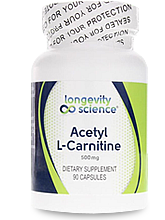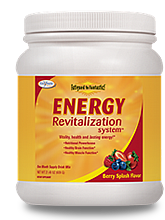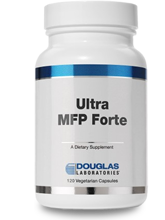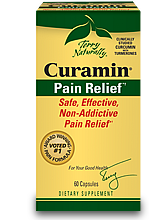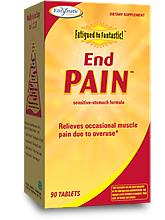Seven Kinds of Pain in Fibromyalgia

It's important to realize that pain is not an outside invader. Rather it's part of your body's monitoring system saying that something needs attention. Think of it as being like the red flashing oil light on your car's dashboard. Our research shows that if you give your body what it needs — like putting oil in your car — the pain goes away.
There are seven key types of pain in fibromyalgia. In this article, I'll discuss each and show you what you can do to feel better (these suggestions apply whether or not you have fibromyalgia).
1. Muscle Pain
Called myofascial pain, muscle pain is associated with decreased energy in the muscles. Although it may seem counterintuitive, a muscle is like a spring in that it takes more energy to stretch than contract. When your energy is too low your muscles tend to shorten, and after a while you develop painful knots in the belly of the muscle called trigger points. That's why your muscles feel tight instead of loose and limp after you've had a heavy workout.
When the pain is localized to specific areas on your body, the cause is often due to strained muscles that result from things like poor ergonomics, uneven hip heights, or repetitive stress injury. Correcting these can be helpful.
When the pain is more generalized throughout your body, as it is in fibromyalgia, the more likely cause is an energy crisis throughout your body. If this is the case, improving energy production by following the S.H.I.N.E.® Protocol (Sleep, Hormones, Infections, Nutrition, and Exercise as able) has been shown in our research to be dramatically effective at decreasing pain. Relief results when improved energy conditions in the muscles allow the muscles to relax. If your energy seems chronically low, taking our free 10 minute quiz called the Energy Analysis Program, which is based on S.H.I.N.E., can help you identify the possible cause(s) and offer suggestions on how you can improve.
2. Nerve Pain
Nerve pain generally results from decreased energy in the nerves that result in uncontrolled repetitive firing. Numerous medications can help this. In addition, nutritional supplements such as lipoic acid 600 mg a day and acetyl L-carnitine 1,000 mg 2 to 3 times daily has been shown to help support healthy nerve function and decrease excessive firing over time. A good multivitamin is also helpful, though be sure to choose one that does not have over 45 mg of vitamin B6, as this can actually aggravate nerve pain.
3. Central Sensitization or "Brain Pain"
When pain becomes chronic, your brain starts to amplify it. This can occur in many if not most kinds of chronic pain. The mechanism is called microglial activation. Microglia are like gardeners in your brain's garden that tend to your brain cells. Normally, they're quite mellow. But like a gardener who sees weeds, microglia get very agitated by chronic pain, and go wild, becoming overactive and actually stimulating a kind of brain pain known as central sensitization. Although many medications are now geared towards masking the pain of central sensitization, some can actually help turn it off. These include low-dose naltrexone (4.5 mg at bedtime) and the antibiotic doxycycline (a tetracycline). This is one reason why doxycycline has been shown to be so effective in rheumatoid arthritis. Unfortunately this research has largely been ignored due to the medication's low cost and, hence, low commercial opportunity.
4. Migraine Headaches
Migraine headaches are a result of blood vessels in the brain being unable to properly expand and contract (although in truth it is for more complex). Interestingly, vitamin B2 400 mg a day has been shown to decrease migraine frequency by approximately 69% after six weeks. Vitamin B12 (200-500 µg) and magnesium 200 mg a day also markedly decrease migraine frequency. These can easily be found in a high potency multivitamin such as the Energy Revitalization System vitamin powder or Clinical Essentials. Food sensitivities and shifts in estrogen and progesterone also play important roles in some cases. Women should suspect the latter if their migraines happen mostly around their menses and ovulation. If this is the case, using an estrogen patch to give stable estrogen levels during those periods can have dramatic benefit.
5. Sinus Headaches and Irritable Bowel Syndrome
Sinus headaches and IBS are most often due to Candida (fungal/yeast) infections. Unfortunately, sinusitis is usually treated with antibiotics, which in the long term actually makes the yeast problem worse, triggering chronic sinusitis. Most women are familiar with antibiotics triggering vaginal yeast infections.
A far more effective treatment for chronic sinus problems is using a good probiotic along with the medication Diflucan 200 mg a day for 6-12 weeks. For sinusitis, compounding pharmacies can make a sinusitis spray that includes antifungal and antibacterials (available by prescription by mail from ITC pharmacy in Colorado). This combination can be very helpful after 6-12 weeks.
Irritable bowel syndrome sometimes reflects a bacterial overgrowth in the small intestine. A simple marker of this is if your gas has a sulfur smell (think "silent but deadlies" back in grade school). In these cases, an herbal mix called Ultra MFP Forte (2 twice a day for a month) can be quite helpful to rebalance healthy gut flora, as can the antibiotic rifaximin.
6. Allodynia
Allodynia is when light touch on the skin is painful. This results from an increase in a brain neurotransmitter chemical called NMDA. This condition can improve by using topical pain creams containing ketamine (available from compounding pharmacies) and NMDA-receptor-antagonist medications such as Namenda.
7. Small Fiber Neuropathy
Small fiber neuropathy is a condition where small nerve fibers in your body start to shrink in response to prolonged chronic pain and central sensitization. This can also result in problems from low blood pressure and heart rate control called orthostatic intolerance and POTS. A simple one-minute quiz can effectively screen for these low blood pressure issues (you can request this quiz from me at FatigueDoc@gmail.com). These are very treatable, although most physicians aren't familiar with them. Interestingly, small fiber neuropathy seems to be associated with immune depletion, and can respond well to intravenous gamma globulin as well as treating the underlying chronic infections.
Other Kinds of Non-Fibromyalgia Pain
A wonderfully effective approach to discomfort in general is an herbal mix called Curamin. In head-on studies, it was more effective than Celebrex after six weeks. But without the toxicity. It can be combined with any pain medications, and I will sometimes combine it with another herbal mix called End Pain.
Autoimmune conditions are complex, but the above herbals have been shown to be very helpful for autoimmune joint discomfort. Low-dose naltrexone has also been shown in many studies to be very helpful for autoimmune illnesses.
CRPS comes from difficulty in regulating the sympathetic nervous system, and is more complex. Fortunately, effective treatments are now available even for this. Those who have, or are be treated for, CRPS can email me at FatigueDoc@gmail.com for more information.

Jacob Teitelbaum, M.D. is one of the world's leading integrative medical authorities on fibromyalgia and chronic fatigue. He is the lead author of eight research studies on their effective treatments, and has published numerous health & wellness books, including the bestseller on fibromyalgia From Fatigued to Fantastic! and The Fatigue and Fibromyalgia Solution. His newest book (June 10, 2024) is You Can Heal From Long COVID. Dr. Teitelbaum is one of the most frequently quoted fibromyalgia experts in the world and appears often as a guest on news and talk shows nationwide including Good Morning America, The Dr. Oz Show, Oprah & Friends, CNN, and Fox News Health.
